In previous episodes of the GrowthSwipeFile, we talked about the future of B2B marketing, including the shift to B2C2B go-to markets.
With that shift to B2C2B, companies need to find ways to market products to the consumers of those products.
Marketing your product to consumers isn't easy, you need something that scales, and provides value to your user without them needing to pay you money immediately.
In this episode of the podcast, we're going to discuss the more common ways to market your product to consumers, along with some B2B brands that excel in these areas.
1. Publisher (create educational and inspiring content to grow your audience)
We're not going to spend much time on this example as it's the one that is most familiar to us.
There are two significant milestones in someone's path to purchasing your product that allow you to grow an audience for that product.
Problem Education: A person is educating themselves on the problem they have. For example, they may be looking to optimize their sales process, better organize their contacts. But, they're not yet searching for education on solutions that potentially solve those problems.
Solution Education: A person is educating themselves on what solutions could solve their problems. For example, they've moved past educating themselves on the problem and are now researching potential solutions like CRM.
Historically a lot of B2B companies marketing dollars went into being the most visible when someone was in solution education, driving up the costs of those marketing channels - a lot of dollars chasing a small group of people, these are the buyers of your products.
With the growth in popularity of content marketing, B2B brands began to shift marketing dollars into being more visible when someone was in problem education. We talked about this shift on the future of content marketing episode with Doug Keesler. As there are many more people in the problem education space, who are generally consumers, brands were able to grow large audiences for their content.
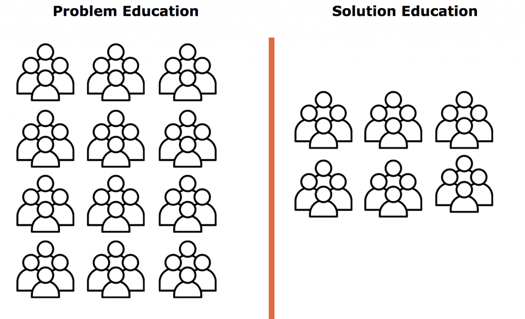
B2B brands have taken a B2C approach to their content marketing, creating content for both the consumers and buyers of their products. Most world-class B2B companies now have a publishing model that creates content across blogs, social, email, podcasts, and youtube in various formats.
Examples: HubSpot, Intercom, MailChimp
2. Product Extensions (extending the product to create scalable growth through a marketing platform/channel)
A concept we've talked about on the podcast before is product-channel fit. It was a term coined by Brian Balfour, who we asked on the show to discuss it. Product channel fit means we build products to fit with channels, not vice versa. So, when developing a product roadmap, you should consider how that product will grow, from what channel, and how it needs to be developed to make that a success.
Marketing your product to consumers means you need scale, and a tiny number of channels/platforms have monopolized that scale.
How do you develop your product with these channels/platforms in mind?
Canva is the best-cited example of a B2C2B brand that has built scale into their product. They've combined both 'Problem Education' in the form of their Discovery library and an extension of their product in the way of a Template library featuring all the different things you can design in Canva.

Combining this with a robust and scalable link acquisition strategy has lead to some stellar growth in organic traffic. Ross Simmonds, a previous guest on the GrowthTLDR did an excellent break down of Canva's SEO strategy here.
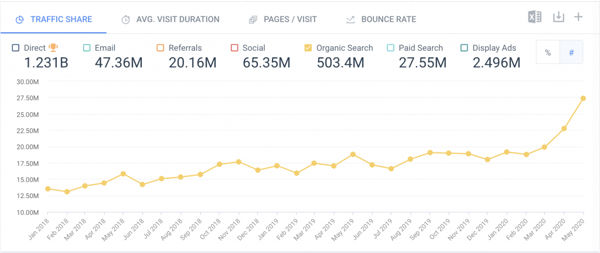
There are other examples of brands who've extended their product to create growth, much of it through Google.
Zapier is another example of a company that's extended its product in creative ways and combined it with fantastic content to gain traction in the 'Problem Education' phase.
They have a blog featuring content to help educate people on their problems. On top of that, they've extended their product to create two different libraries to demonstrate how their product can help you.
You can 'Explore' the most popular jobs to be done that Zapier helps solve by allowing you to combine a variety of apps. Or, you can explore the most popular jobs to be done by role.
By combining both a 'Problem Education' and a 'Product Extension' strategy, Zapier has seen a lot of growth in organic traffic.
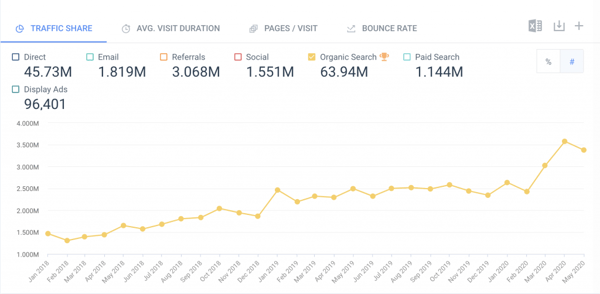
The unicorn in B2B is extending your product and combining it with a user-generated content approach that helps you gain visibility in the 'Problem Education' space. An example of a company doing this is Coda.io.
Coda.io is a document collaboration tool used by many well-known tech brands. Luckily for Coda, there are many different document types needed by teams, giving them a whole host of content they can create. But Coda.io has incorporated that content into a user-generated gallery featuring document templates from both their customers and well-know experts.
If a company can combine - Problem Education + Product Extension + User-Generated Content = that's a lot of potential growth.
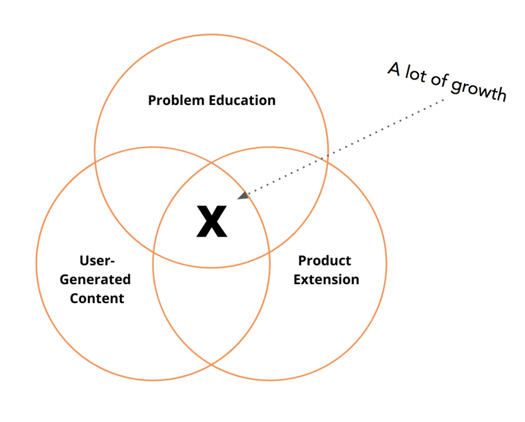
So far, Coda.io has seen some excellent organic growth; time will tell if there is enough of a distribution TAM for topics relevant to their product for it to be exponential growth like Canva. What do we mean by a distribution TAM, we discussed it here :)
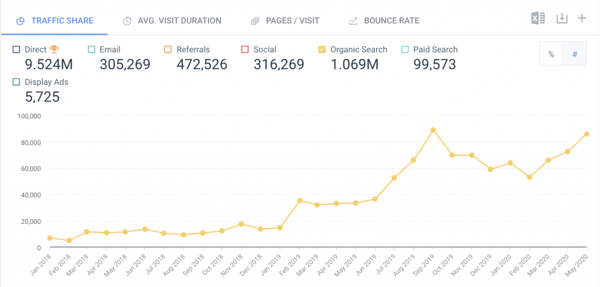
3. Product Bundles (bundling with another product to extend the reach of yours)
Another way to extend your product's reach is to bundle the lightweight version of it with another product that targets the same audience but has a non-competing product.
A great example of this is the Spotify Premium and Hulu bundle. The bundle helps to introduce each brand's product to the other audience in a low-cost way. The package you give away is typically a low-cost package, and you can write the cost off as a marketing acquisition cost e.g. CAC.
There are other creative ways you can bundle your product with other similar products, who have reach with the audience you want access to but don't directly compete with you. For example, ProductHunt recently launched a mentorship directory:
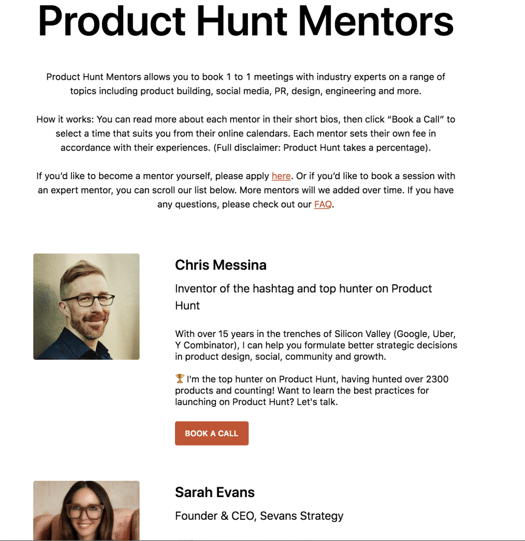
It's built on top of SuperPeer.com, it's a great way for SuperPeer to get visibility for their product by bundling with ProductHunt, and a great way for ProductHunt to leverage their software to grow out a budding marketplace.
We hope the above gives you some ideas for your consumer-led growth efforts. Hit us up on twitter @searchbrat @sjtousley to share feedback/ideas.
 iTunes
iTunes Stitcher
Stitcher Spotify
Spotify